Cutting Downtime in Greece: How Pallet Changing Machines Help
Unplanned downtime is a silent profit killer in any heavy industry. I've seen it countless times. A single broken wooden pallet or a slow, manual restacking process can bring an entire production line to a screeching halt. Think about the chain reaction that follows: shipping deadlines are missed, logistics schedules are thrown into chaos, your staff gets frustrated, and costs begin to pile up. This is a constant headache for plant managers and owners like you. But what if you could swap an entire pallet load in under a minute, safely and automatically? This is the power of pallet changing machines. They can turn a major bottleneck into a smooth, efficient part of your operation. I saw this transformation happen with a client in Greece, and the results were remarkable.
Pallet changing machines help cut downtime in industrial settings, like the one I worked with in Greece, by automating the entire process of transferring goods from one pallet to another. This simple change eliminates the risks of manual handling, dramatically speeds up internal logistics, prevents product damage from faulty pallets, and allows for seamless integration into automated production lines. The end result is a significant, measurable increase in operational uptime and reliability.
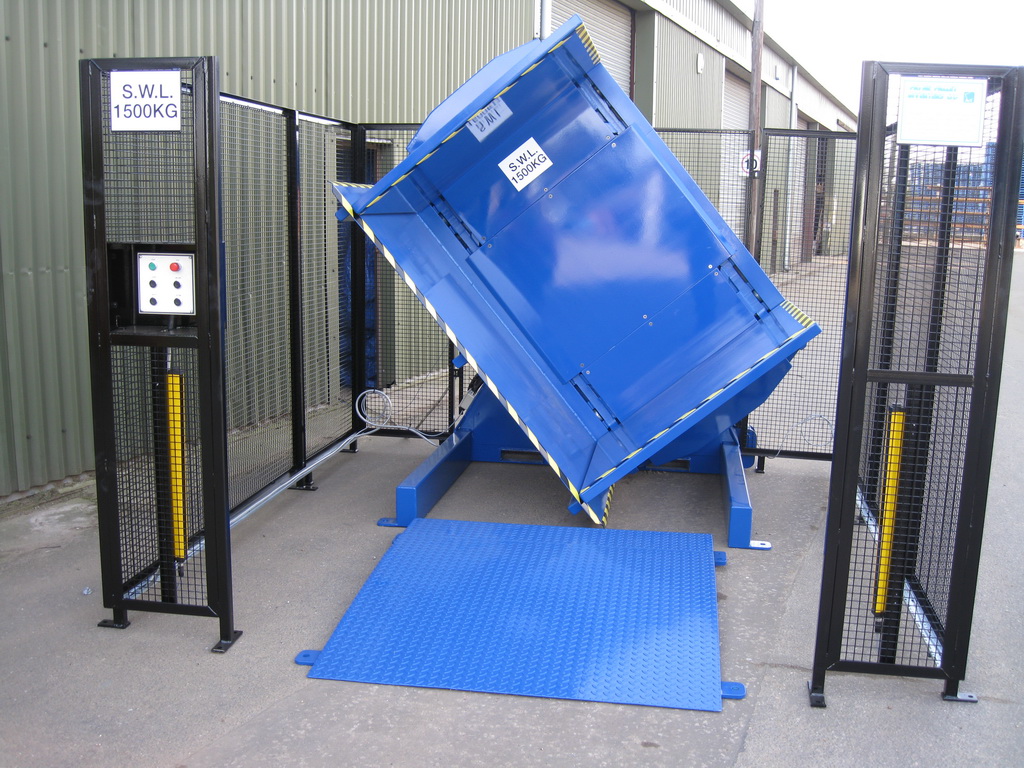
This isn't just about moving faster. It is about building a more resilient and predictable operation. In my years of designing and building these systems, I've learned that the real value lies in how they solve multiple problems at once. We are talking about safety, efficiency, and quality control. So, let’s look closer at how these machines deliver such a strong return on investment and why they are becoming essential for forward-thinking leaders in demanding industries.
How Does a Pallet Changer Directly Impact Production Uptime?
Your production targets are aggressive. I know the pressure is always on. In this environment, a single manual process, like changing out a broken or non-compliant pallet, can be the weakest link in your entire chain. It seems like a small task, but it introduces unpredictability and risk every single time your team has to do it. What if that weak link could be replaced with something strong, fast, and completely predictable?
A pallet changer directly impacts uptime by replacing a slow, inconsistent manual task with a fast, standardized, and automated one. It reduces the time taken to handle damaged pallets or switch to different pallet types from many minutes of manual labor to less than 60 seconds. This drastic time reduction minimizes line stoppages and keeps your products moving.
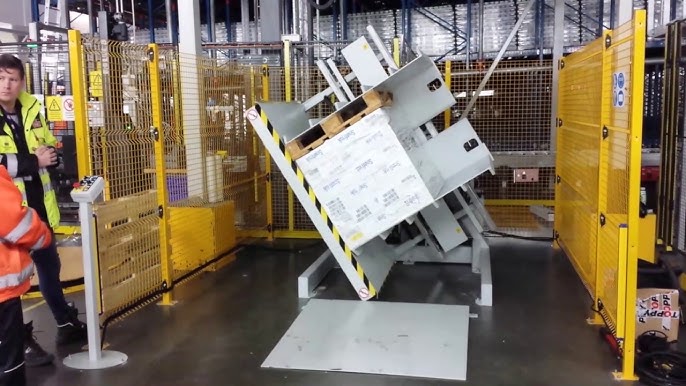
The Mechanics of Time-Saving
Let’s be very practical. A manual pallet change involves several steps. Your workers must first move the pallet to a safe area. Then, they have to destack the entire load, box by box or bag by bag. Next, they replace the old pallet with a new one. Finally, they must restack the entire load. This process is slow, physically demanding, and prone to error. It can take 15 to 30 minutes, depending on the load.
Now, compare that to an automated pallet changer. The operator places the entire load into the machine with a forklift. The machine then gently clamps the load, rotates it or pushes it, and swaps the pallet. The operator then removes the finished load. The entire cycle is often completed in under 60 seconds. The time saved isn't just a few minutes here and there; it's a fundamental change in workflow. This reclaimed time goes directly back into productive output, boosting your overall equipment effectiveness (OEE).
Eliminating Unscheduled Stops
One of the biggest sources of downtime is the unexpected discovery of a broken or damaged pallet right before shipping. This can cause a major delay. The truck is waiting, but your team has to stop everything to manually restack the load. A pallet changer turns this reactive problem into a proactive solution. You can build a quality check into your process. All incoming or outgoing loads can pass through a pallet changer to ensure they are on high-quality, compliant pallets. This eliminates the "surprise" of a broken pallet and prevents unscheduled stoppages at the most critical point in your logistics chain. For our client in Greece, this was a game-changer for their export operations, where pallet quality is non-negotiable.
Standardization and Predictability
As an engineer, I value predictable systems. Automation creates a known, repeatable cycle time. You know that every pallet change will take, for example, 55 seconds. This predictability is crucial for modern production planning, especially if you use an MES (Manufacturing Execution System). Your planning software can rely on accurate data, not on a rough estimate of a manual task. This allows for tighter scheduling and better resource allocation.
Here is a simple breakdown of the difference:
| Feature | Manual Pallet Changing | Automated Pallet Changer |
|---|---|---|
| Average Time | 15-30 minutes | < 1 minute |
| Consistency | Highly variable | Highly consistent |
| Labor Requirement | 1-2 operators | 1 operator (part-time) |
| Safety Risk | High (lifting, strains) | Very Low |
| Product Damage Risk | Moderate to High | Very Low |
| Data Integration | None | Full (MES/WMS) |
This level of control and predictability is what allows facilities to push their uptime from 90% towards that goal of 95% or higher. It’s not about one big change; it's about optimizing every small step in the process.
What Are the Hidden Costs of Manual Pallet Handling in a Heavy-Duty Environment?
When you look at your budget, the cost of direct labor is easy to see. You know how much you pay your workers per hour. But what about the costs that don't show up so clearly on a spreadsheet? I'm talking about the hidden expenses that slowly bleed your profits. In my experience, things like workplace injuries, damaged goods, and slow throughput are often far more expensive than the wages of the people doing the work. These are the problems that keep a good operation from becoming a great one.
The hidden costs of manual pallet handling are significant. They include high workers' compensation claims from back injuries and strains, financial losses from products damaged during transfer, risks of cross-contamination, and a drop in employee morale. Most importantly, they create a major productivity bottleneck due to the slow, labor-intensive nature of the task itself.
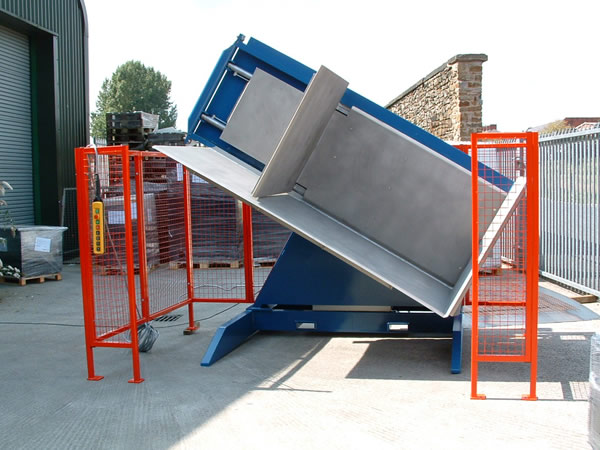
The True Cost of Workplace Injuries
In a heavy-duty environment like a steel mill or a large manufacturing plant, manual handling is a serious risk. Repetitively lifting heavy boxes or bags puts immense strain on the back, shoulders, and knees. A single serious back injury can have massive financial consequences. There are the direct costs, like medical bills and insurance premium increases. But the indirect costs are often even larger. You lose a trained, experienced worker. You have to spend time and money recruiting and training a replacement. The morale of the team can suffer when they see a colleague get hurt.
A pallet changer almost completely eliminates these manual handling risks. The operator stays safely inside the forklift cab. The machine does all the heavy lifting. This isn't just about complying with safety regulations; it's about protecting your most valuable asset: your people. A safer workplace is a more productive and stable workplace.
Product Damage and Quality Control
When people have to manually restack a pallet, things can get dropped, dented, or crushed. This is especially true with heavy or awkwardly shaped products. Each damaged item is a direct loss of profit. In some industries, like food or pharmaceuticals, a dropped box can mean the entire pallet is contaminated and must be scrapped.
A pallet inverter or changer handles the load with consistent, controlled pressure. It clamps the load securely before it ever moves. The transfer is gentle and precise. This protects the integrity of your product and packaging. By reducing product damage, the machine pays for itself over time. It ensures that the product you spent time and money producing reaches your customer in perfect condition.
Inefficiency as a Compounding Cost
A slow manual process doesn't just waste time at one point; it creates a bottleneck that can back up your entire production line. If finished goods can't be moved out of the production area quickly because of a slow palletizing or transfer process, the production line may have to slow down or even stop. This lost production capacity is a huge hidden cost.
Let’s look at these costs side-by-side:
| Visible Costs | Hidden Costs |
|---|---|
| Operator Wages | Cost of Workplace Injuries (Medical, Insurance) |
| Cost of Pallets | Cost of Damaged Products |
| Forklift Maintenance | Lost Productivity from Bottlenecks |
| Cost of Training Replacement Staff | |
| Negative Impact on Employee Morale | |
| Overtime Costs to Catch Up |
When I started my journey as an engineer in a factory, I saw these hidden costs firsthand. I saw the frustration of managers trying to meet quotas with an inefficient system. That is what inspired me to focus on creating solutions that solve the root problem, not just the visible one.
Can Modern Pallet Changers Integrate with Existing MES and IoT Systems?
You have likely invested a lot of money and effort into building a smart factory. You have an MES to manage production orders and an IoT platform to gather data from your equipment. But what happens when a critical physical process, like pallet handling, can't "talk" to your digital systems? It creates a data black hole. This gap prevents you from having a truly transparent and optimized operation. You are missing a key piece of the puzzle.
Yes, modern pallet changers are specifically designed for integration. They are not isolated machines. They can connect directly with MES and IoT platforms using standard PLCs and industrial communication protocols. This connection provides real-time data on cycle times, load counts, machine status, and error codes, enabling a fully connected and visualized production flow.
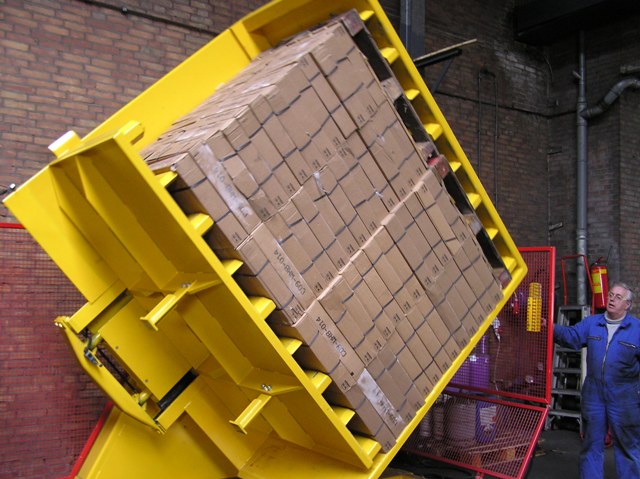
The Bridge Between Physical and Digital
The "brain" of a modern pallet changer is its PLC (Programmable Logic Controller). This PLC can be equipped with communication modules that speak the same language as your factory's central systems. Common protocols like EtherNet/IP, PROFINET, or Modbus TCP allow for a seamless two-way exchange of information.
Your MES can send a command to the pallet changer, telling it which pallet type to use for a specific production order. In return, the pallet changer sends data back to the MES, confirming that the task is complete. This handshake between the physical machine and the digital system closes the loop. It ensures that what is planned digitally is actually executed physically on the factory floor. This is a core principle of Industry 4.0.
Data for Predictive Maintenance
One of the most powerful goals for any plant owner is predictive maintenance. You want to fix problems before they cause a shutdown. This is where IoT integration becomes so valuable. We can embed IoT sensors into the pallet changer to monitor critical components. For example, sensors can track motor vibration, hydraulic pressure, and oil temperature.
This data is streamed to your central analytics platform. The platform can analyze trends and detect small anomalies that indicate a potential failure. Your maintenance team then gets an automatic alert, telling them that "Motor 3 on Pallet Changer 2 shows high vibration. Schedule inspection." This allows you to schedule maintenance during planned downtime, instead of reacting to a sudden breakdown. This directly supports the goal of reaching 95% equipment uptime.
Enhancing Smart Scheduling
For a smart scheduling platform to work well, it needs accurate and reliable data. If your system thinks a manual pallet change takes "about 20 minutes," it has to build a large buffer into the schedule. This buffer is wasted time.
When the pallet changer is integrated, your MES knows that the cycle time is exactly 55 seconds, every single time. This allows the scheduling algorithm to be much more aggressive and efficient. It can plan production runs with tighter tolerances, maximizing the use of every machine on your line.
Here are some of the data points an integrated pallet changer can provide:
| Data Point | Use in MES / IoT Platform |
|---|---|
| Cycle Count | Tracks total throughput and equipment usage. |
| Cycle Time | Verifies operational efficiency and standardization. |
| Error Codes | Enables instant troubleshooting and diagnostics. |
| Motor Current/Vibration | Feeds predictive maintenance algorithms. |
| Load Presence Sensors | Confirms material flow and updates inventory. |
| Machine Status (Running, Idle, Fault) | Provides real-time visibility for production dashboards. |
This level of integration transforms a pallet changer from a simple piece of material handling equipment into an intelligent node in your smart factory network.
My Insights: Why a Strategic Partnership Outweighs a Simple Purchase
Buying a machine is the easy part. You can compare spec sheets and prices from a dozen suppliers. But will that machine truly solve your core operational problem? I have learned over many years that a machine is just a tool. If it's the wrong tool for the job, or if you don't have the right support to use it effectively, it can become just another problem instead of a solution. I've seen this happen too many times, and it is a frustrating waste of potential.
A strategic partnership is far more valuable than a simple purchase because it delivers an end-to-end solution. This approach includes an expert analysis of your specific needs, custom machine design to fit your process, support for seamless integration, and a commitment to ongoing maintenance. This is how you ensure the equipment delivers maximum ROI and solves the root operational challenge, not just a surface-level symptom.
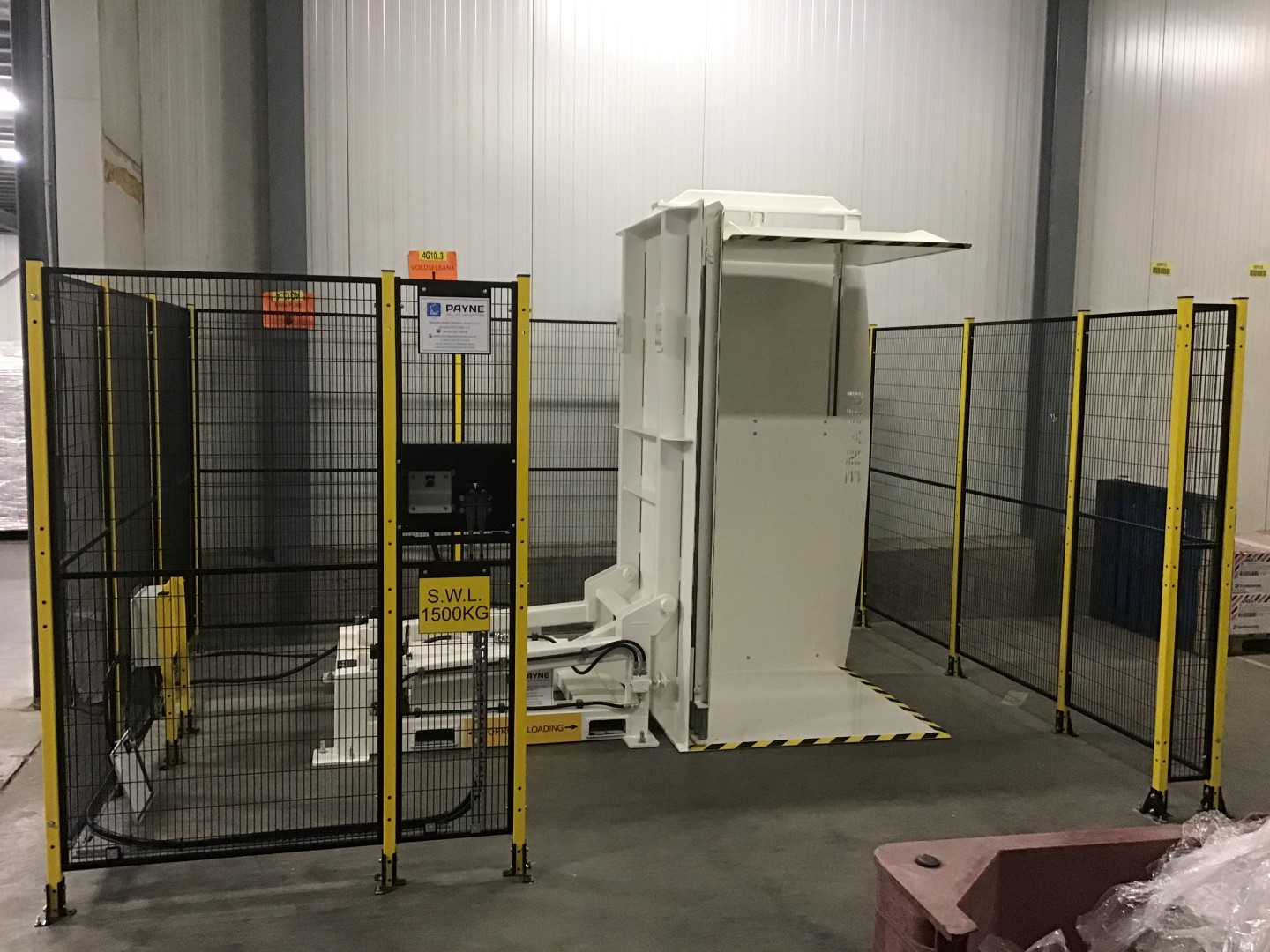
Beyond the Spec Sheet
A supplier will sell you a machine based on a spec sheet. A true partner starts by asking questions. They want to understand your entire process, from where the materials come from to where the finished goods are going. When I started SHJLPACK, I built it on this philosophy. My own journey started on the factory floor. I was the engineer dealing with the consequences of equipment that wasn't quite right for the job. Now, as a factory owner myself, I know that the initial purchase price is only one small part of the total cost of ownership.
The most important work happens before a machine is even built. It involves walking your factory floor, talking to your operators, and understanding your unique challenges. Do you have space constraints? Are you handling very heavy or fragile products? Do you need to meet specific hygiene standards? The answers to these questions should define the machine, not the other way around.
The Case from Greece
Let me tell you about that client in Greece. They run a very successful food export business. They didn't just call me and say, "I need a pallet changer model X." They said, "We are having shipments rejected at the port because our wooden pallets don't meet EU standards, and our manual process for switching to plastic pallets is causing huge delays."
The problem wasn't just a pallet problem; it was a logistics and compliance problem. We didn't just sell them a machine. We worked with them to design a workflow. We positioned the pallet changer at the final checkpoint before containers were loaded. We integrated it with their scanning system so that each load's pallet type was verified and recorded. The solution was a combination of the right machine and the right process. That is what a partnership delivers.
Long-Term Value vs. Short-Term Cost
A cheap machine with poor support can be the most expensive thing you ever buy. When it breaks down, who do you call? How long does it take to get spare parts? Is there anyone who can help your team troubleshoot the issue effectively? These are the factors that determine the true value of your investment.
A strategic partner is there for the entire lifecycle of the machine. This means providing detailed training for your operators and maintenance staff. It means having a clear plan for spare parts availability. And it means having technical experts available to help you solve problems quickly. This long-term support and reliability are what separate a successful investment from a failed one. This is the core of what we do at SHJLPACK. We are not just selling machines; we are sharing the knowledge I have gained over a lifetime in this industry to help our clients succeed.
Conclusion
Pallet changers cut downtime by automating a critical process. Integrating them with a strategic partner ensures you gain efficiency, safety, and a true, long-term solution for your facility.


